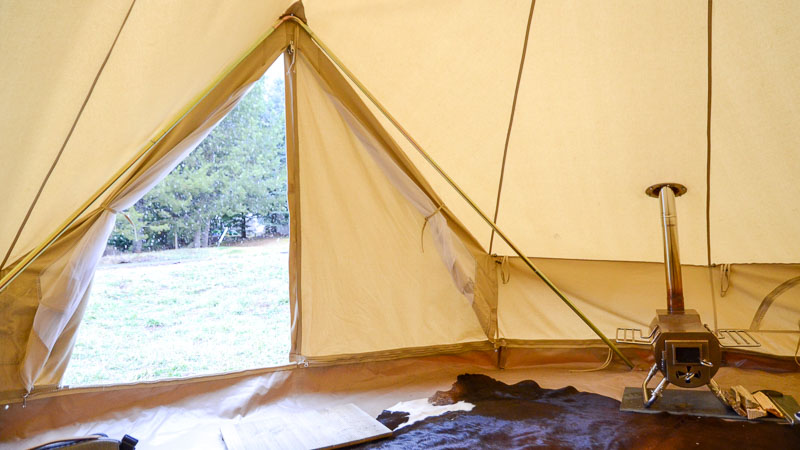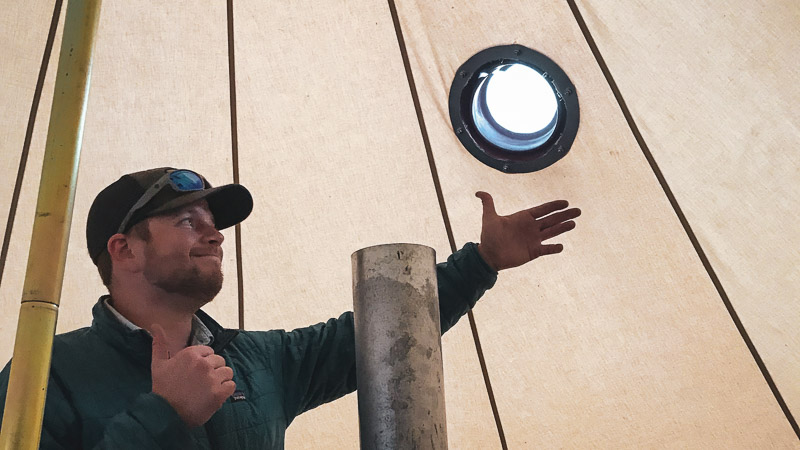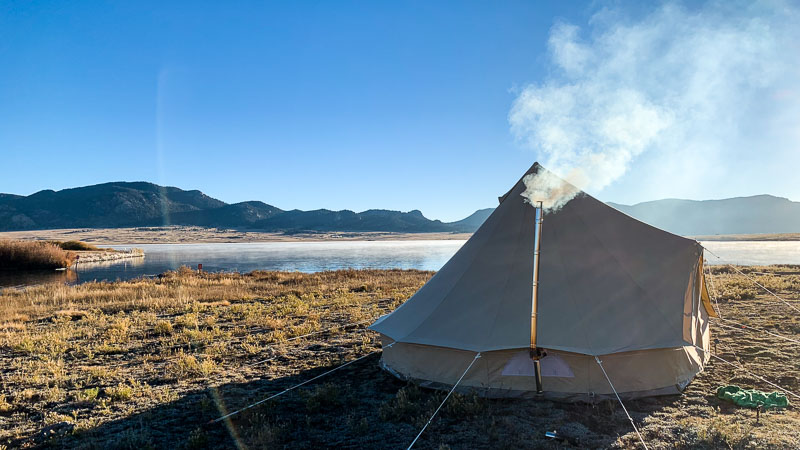Tent Stove Mistakes
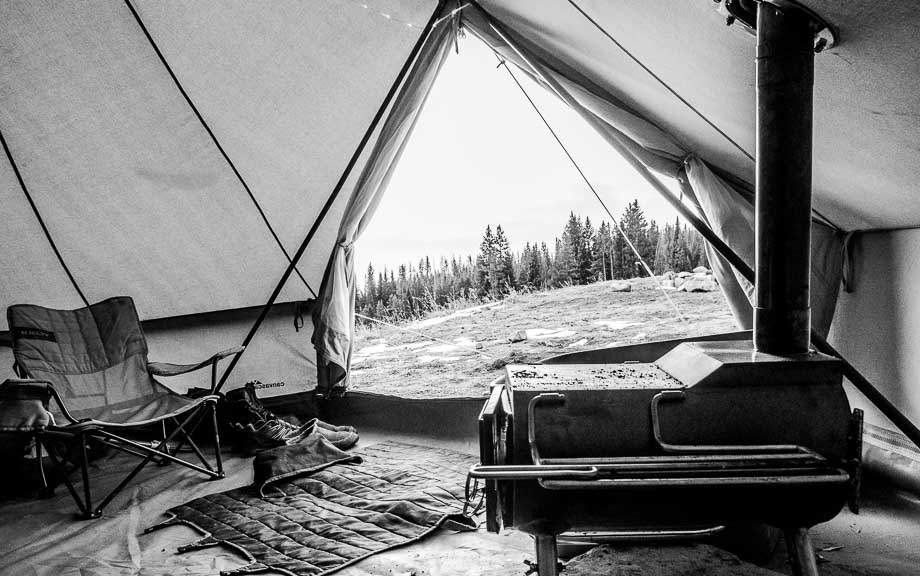
Photo Credit: Embuzi
Most responsible hot tenters take steps to educate themselves on the safe and responsible use of tent stoves. There is also a lack of good information on tent stoves in once place from a trusted and experienced source. We’ve compiled years of customer feed back and our own practical experience in the field to help identify the solve the most common tent stove problems.
Featured from left: Frontier Plus, Orland Camp Stove, Gstove
Incompatible Expectations
Choosing the wrong tent stove to meet your expectations is far and away the most common cause of unhappy tent stove operators. Although you can make a tent stove out of a coffee can and some aluminum foil; it is unlikely that using that contraption is going to be effective or enjoyable. The same concept applies to ultra-cheap tent stoves sold on Amazon and made by manufacturers of questionable repute. Granted good quality tent stoves can be affordable, they are often made so by sacrificing performance and convenience. By understanding how a stove works and why, you can cut through the marketing buzz words and purchase a tent stove that aligns with your performance expectations.
Featured: Sibley 450 Pro, GStove
Stove Placement
Many canvas tents come with pre-installed stove jacks. Pre-installed stove jacks are in the wrong place for 80% of users. Instead opt for a modular stove jack that you install yourself in just a few minutes. Proper stove placement is entirely dependent on the type of stove you are using and the temperature differential you are trying to achieve between your tent and the outside environment. A high quality glamping stove with a high heating efficiency placed closed to the side wall of a tent may be more an sufficient to heat a canvas wall tent to 65 degrees on a 32 degree night. A cheap cylinder stove of a similar size placed in the same location may leave you freezing as it rockets heat straight up the flue pipe. Placing a stove closer to the side of a tent and by the door is convenient – it takes up less space in your living area and easy to clean and fuel without tracking dirt through your tent. Side mounted stoves also have less flue pipe exposed to the inside of your tent, limiting heat transfer opportunities. A good rule of thumb: when in doubt, center mount – as close to the middle of your tent as possible
Featured: Exit I Stove Jack
Tent Compatibility
Almost any canvas tent can be fitted with a stove jack to accept a tent stove. The more space inside a tent, the more heat you will need to raise the temperature. Canvas tents vary in size and shape. The conical shape of a tipi or Sibley is much more efficient to heat than a boxy wall tent even when the square footage is the same. A wall tent may require significantly more heat output from a tent stove than a similarly sized Sibley. A large tent stove may produce too much heat to be placed near the steep slant of the canopy in a small tipi. When in doubt, contact your tent manufacturer and ask for a recommendation, or contact CanvasCamp!
Featured: Sibley 500 Pro
Smokey Tents
Unless there is something other than the firebox that is on fire, smokey tents almost always a result of poor drafting. Waste build up in the flue pipe, spark arrestor, or flue damper can limit the rate at which smoke can escape – eventually it will start spilling out into your tent. Loose guy lines can result in the tent ‘heaving’ in gusty winds, creating a suction which can draw smoke and ash into the tent instead of out the flue pipe. If there is not enough heat in the stove to cause air to rise out the flu pipe, smoke can build up in your tent instead. This cold stove effect is most common when lighting a tent stove or when a fire is burning out. In both cases make sure the bulk of the fire is pushed to the back of the stove directly under the flue pipe and make sure your airways in and out are clear.
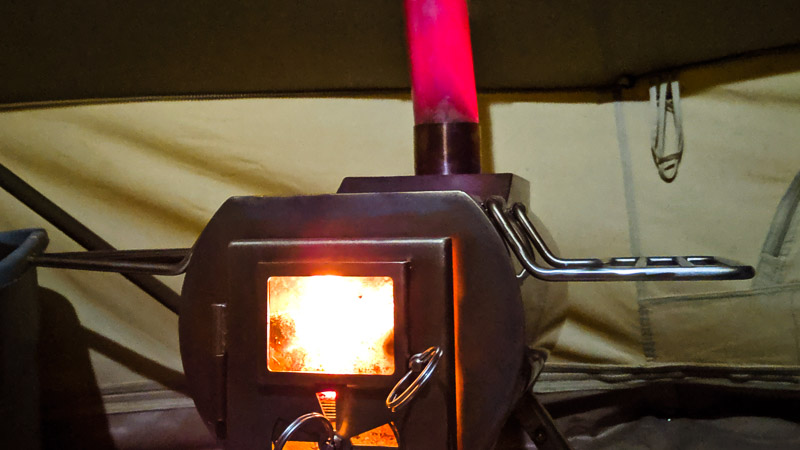
When in doubt, put it out!
There is no substitute for personal responsibility, safety precautions, and a fire extinguisher. Never start a fire you are not prepared to attend constantly and extinguish completely. YOU, the operator of the stove and the starter of the fire, are solely responsible for putting that fire out. Even if your tent stove is defective and malfunctions in the course of normal use, that sense of profound injustice and frustration is not an effective fire fighting tool. If you are inclined to counter by arguing the finer points of civil liability torts and consumer protection laws, you may be right – and you should definitely not be starting a fire.
Context is everything but establishing a checklist of routine actions when dealing with any stove issue should include:
- Get all non-essential personnel outside
- Always have a fire extinguisher handy. Keep it in the same spot so you know where to find them and make sure it’s ready to go at a moments notice.
- Glove up with thick heat resistant gloves -- keep them next to your fire extinguisher
- Keep your stove clean. Clear your flue pipe, spark arrestor, and flue damper before every fire
- Have and use a CO detector and educate yourself about carbon monoxide and tent stove safety.
Ready to start hot tenting? Apply your tent stove expertise and shop for the best tent stove for you. Learn more about wood burning tent stoves by exploring our Tent Stove Buyers Guide – the complete guide to buying, owning, and operating a tent stove.





